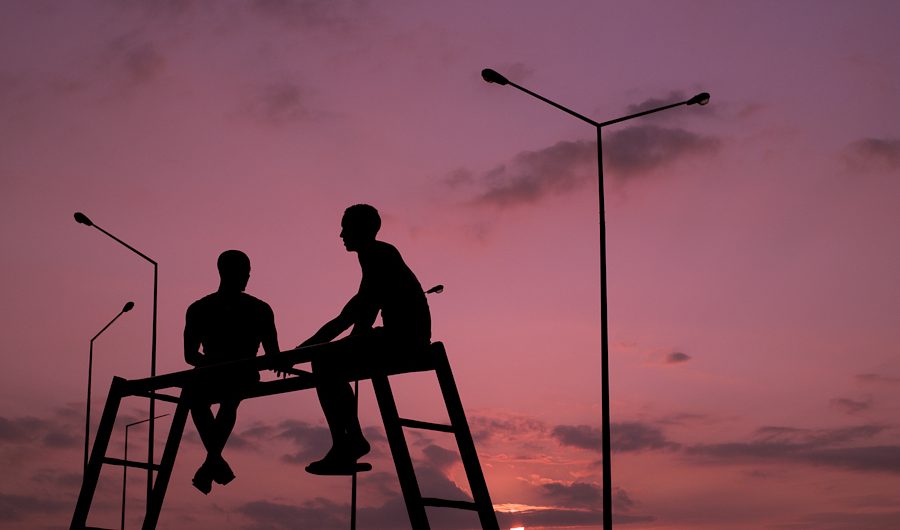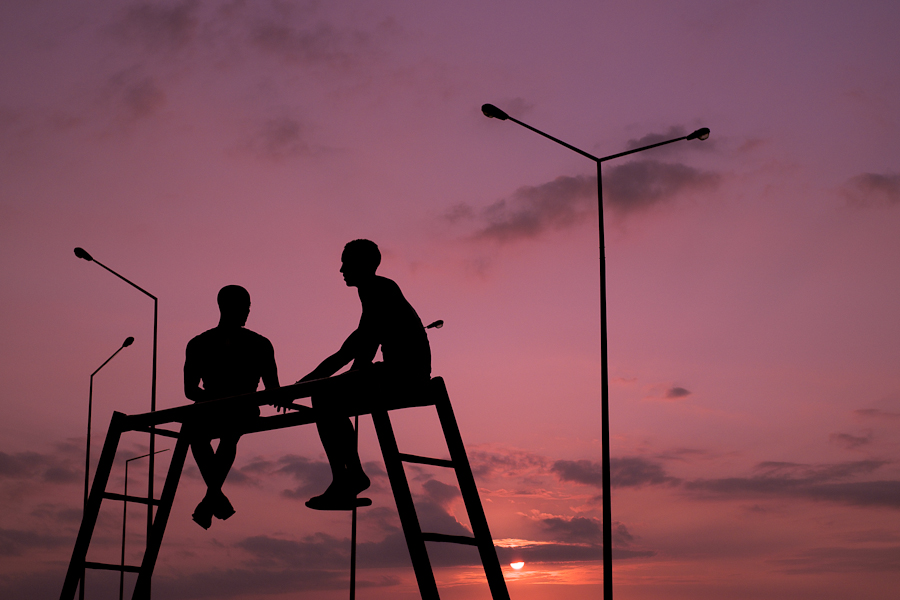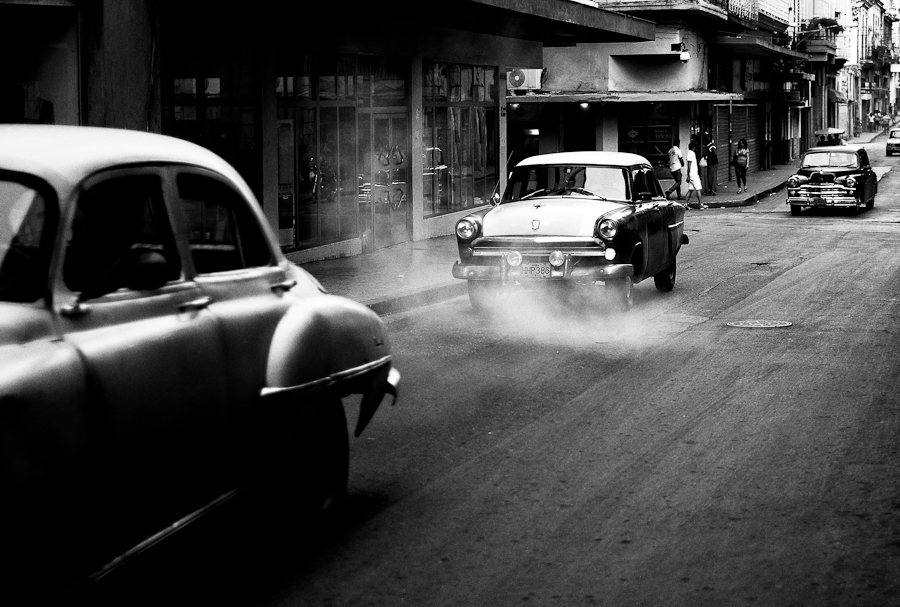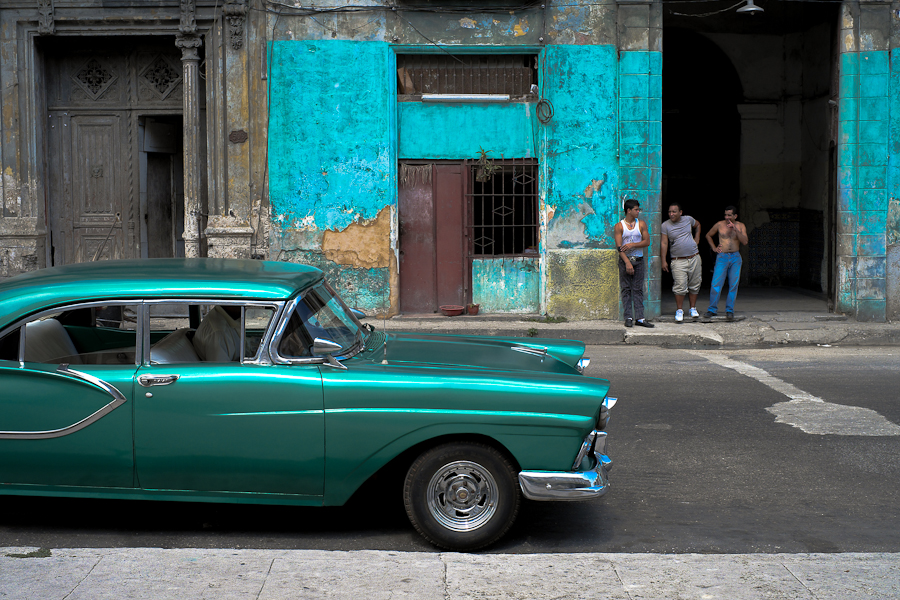

by Daniel Webb
Introduction – about me and my gear
This is the first time that I have written an article for Luminous Landscape so it probably makes sense to introduce myself first so that you can get an idea where I am coming from as a photographer and decide for yourself whether my views, likes and dislikes are likely to chime with your own.
I am a semi-professional photographer and have a modest selection of my work represented by Getty images. For my day job, I have my own IT consultancy company and provide software testing services to financial services clients in the UK.

I took up photography as a complete beginner around 8 years ago and was completely hooked form the start. I started out with a Canon 350D and quickly began to acquire a kit of Canon L series lenses. I took photos as often as I could and worked hard on my technique by learning from others. Since then I have owned the following cameras..
-
- Canon 1Ds (w/ 24-105 f/4L IS, 70-200 f/2.8L IS, 17-40 f/4L)
- Canon 1Ds Mark II (w/ 24-105 f/4L IS, 70-200 f/2.8L IS, 17-40 f/4L, 300 f/4L)
- Leica M8 (w/ 35mm f/2 Summicron ASPH, 75mm f/2.5 Summarit, 50mm f/2 Summicron, Voigtlander 50mm f/1.1)
- Canon 5D (w/ 50mm f/1.2L)
By far the camera that I loved using the most was the Leica M8. It taught me so much about the craft of photography and was an absolute joy to own and use. I only sold it as I had the intention of picking up an M9 once they started to hit the second hand market at decent prices (which has still never happened). The Canon 5D with 50 1.2 was a stop-gap camera for me to use on foreign trips and worked really well but was too large to become my camera of choice.
The Cuba Trip – gear selection
I had been planning a trip to Cuba for a couple of years with friends and as the date approached I realised that I was going to have to finally make a decision about which camera I was going to take. This was going to be a photographic trip of a lifetime for me so I wanted to make sure that I had the right camera for the job.
I trawled the Internet for reviews and information about the cameras on my shortlist (Sony NEX-7, Fuji X-Pro 1 and Leica M9) and finally decided that the Fuji or the Leica were the cameras for me. The Sony was taken out of the picture (no pun intended) as it felt too small to me.
The Leica kit that I would have wanted for the trip consisted of a 24mm f/3.8, 50mm f/2 and 75mm f/2.5 which, at time of writing, would set me back in the region of £10,000.
Conversely, I was able to get 2 X-Pro 1 bodies, all three Fujinon lenses plus a spare 35mm lens (I was worried about the sticking aperture problem of the X100 recurring) and a few accessories for less than half that.
In the end the decision was made on a financial basis – I believed that I’d be able to get the quality I wanted, and needed, from the Fuji and that the Leica, whilst attractive was a bad idea. I was also worried about investing £5,000 into a body which will likely be replaced by Leica in the near future.
Handling
The Fuji X-Pro 1 and lenses to my mind handle extremely well. They are just the right size for my large-ish hands and feel very similar in terms of handling to a Leica M but with considerably less weight. If you are coming from a Leica you might find the Fuji feels initially quite cheap but I can say that the build is extremely nice once you get used to the lighter weight, which in my view is a benefit.
The manual aperture, shutter speed and exposure compensation dials on the camera all work really nicely – it’s so much fun to use a camera with this type of control layout – if only modern dSLRs could re-introduce this kind of ‘old-school’ control mechanism.
The only criticism I will level at the camera is the placement of the AF point selection. It’s in a really awkward place on the left side of the camera and doesn’t naturally fall to hand for me. It’d be nice to be able to associate this with the customFnbutton – Fuji if you are listening, could you add this in the next firmware update?
Auto ISO
I found the auto ISO setting to be useful but also, at times, frustrating. The inability to set a minimum shutter speed means that in some instances the shutter speed is too low – for example the setting for the 35mm lens is 1/52 second. I found the best way round this was to set the aperture and shutter speed to what I desired and let the Auto ISO compensate to give a correct exposure – this works well and is a neat trick.

Lenses
As has been said previously on this site and others, Fuji are no newcomer to lens design. In fact, they made some exceptional lenses in the large format film and broadcast television arenas. This is evident in the quality of the lenses Fuji have produced for the X-Pro 1.
In particular, I am delighted with the image quality I am getting from the 35mm and 60mm lenses.
Due to the fact that I have been working with 50mm or 50mm equivalent lenses for quite some time I found the 18mm quite hard to compose with, being out of practice. I quickly decided that I wasn’t getting a good feeling for this focal length so didn’t spend a lot of time with it in Cuba – I will try my best to use it and post a follow up now that I am back home in Scotland. I knew I wouldn’t use this lens much on the trip but also knew that if I didn’t have it, ‘sod’s law’ would apply and, I would want it.
So, what can I say about the lenses I did use? Both the 35mm and the 60mm are extremely sharp, and usable, wide open. The level of detail coming out in my images is well up to the standard I have expected from any of my gear, including my Leica lenses. It’s difficult to imagine needing any more resolution for the type of photography that I enjoy. In addition to this I find the rendering of out of focus areas very pleasing to my eye – I enjoy shooting lenses wide open so this is definitely an important aspect of the performance of any lens that I purchase.
The Viewfinder
When I bought the X-Pro 1 I had a pre-conceived idea that I would use the optical viewfinder almost 100% of the time. I hadn’t used a camera with an EVF since the Sony R1 and never really enjoyed using EVFs over an optical view of the world. I couldn’t have been more off the mark. Since experimenting with the viewfinders I find that I am using the EVF 100% of the time – I find it to be the best way to compose and shoot with the X-Pro 1 – the quality is far superior to my expectations and is definitely suitable for my style of shooting.
Speed
The X-Pro 1 is no speed demon when compared to a modern dSLR or even other small system cameras. I think if you come to the camera with expectations set by a dSLR then you will almost certainly be disappointed.
Given that the other camera I was considering buying was a Leica M9 I have tried to compare it to the use of a manual focus rangefinder in my evaluation. I am a relatively skilled user of rangefinder cameras and I think I can honestly say that I find the X-Pro 1 to be at least as quick, if not quicker to use and get the shot than a manual camera.
I definitely got more shots in-focus than I would have with a manual rangefinder on the trip.
I was able to use zone-focusing where it made sense to do so in exactly the same way as I would with a manual camera.
On the subject of zone-focusing there is one bug that I have noticed in the cameras firmware. The camera will show you a depth of field indicator on the manual focus scale but I have found this to be wildly inaccurate. I have had memorise my most used aperture and hyperfocal distances at the moment in order to accurately zone focus. Fuji – could you please address this in a future firmware update?

Conclusion
Technical performance aside I find the Fuji an extremely enjoyable camera to own and use. It’s hard to put your finger on why this is the case but I think it’s a combination of nicely laid out manual controls, and a really nice aesthetic design that nods to classic rangefinder cameras. The camera looks good, handles well and produces great quality images. It’s definitely a keeper for me.
Now all I need to do is find a Havana Club sticker to place as my red dot.
A footnote about Cuba as a photographic destination
I found Cuba to be one of the most wonderful places to visit as a photographer. There were literally photographic opportunities at every turn. Photographing people was a joy due to their friendly nature and willingness to participate in photographs. If you enjoy cars in any way you will be ‘like a kid in a sweetie shop’ as we say here in Scotland. I had imagined that you would see the occasional classic car but these cars were absolutely everywhere – it was actually very easy to take photographs with almost no indication that you weren’t shooting in the 1950s!
If you like food and eating out you will likely be disappointed. The food in Cuba is not great and the lack of a steady supply of anything means that what you can get one day may not be available the next. The ‘highlight’ was a mixture of broccoli, olives and fried eggs in a pot, served at our hotel in Havana for breakfast!
If you like drinking then you are in luck – mojitos, frozen daiquiris and beers are all well catered for – we tended to eat to survive and drink to have fun when we were there.
Live music is everywhere – all the bars and restaurants have bands playing and you will be amazed at the standards of musicianship. You will see world-class musicians playing in every second bar.Service was pretty poor in our hotel but in the bars and restaurants tended to be quite good. If you can get into the Caribbean pace of life I think you will find it generally okay – tipping 1CUC ($1) here and there helps to bring up the service levels a bit, we found.
If you haven’t been and you enjoy travel photography, get a trip to Cuba on your bucket list!
June, 2012

Lorem ipsum dolor sit amet, consectetur adipiscing elit, sed do eiusmod tempor incididunt ut labore et dolore magna aliqua. Ut enim ad minim veniam, quis nostrud exercitation ullamco laboris nisi ut aliquip ex ea commodo consequat. Duis aute irure dolor in reprehenderit in voluptate velit esse cillum dolore eu fugiat nulla pariatur. Excepteur sint occaecat cupidatat non proident, sunt in culpa qui officia deserunt mollit anim id est laborum.
Lorem ipsum dolor sit amet, consectetur adipiscing elit, sed do eiusmod tempor incididunt ut labore et dolore magna aliqua. Ut enim ad minim veniam, quis nostrud exercitation ullamco laboris nisi ut aliquip ex ea commodo consequat. Duis aute irure dolor in reprehenderit in voluptate velit esse cillum dolore eu fugiat nulla pariatur. Excepteur sint occaecat cupidatat non proident, sunt in culpa qui officia deserunt mollit anim id est laborum.
Lorem ipsum dolor sit amet, consectetur adipiscing elit, sed do eiusmod tempor incididunt ut labore et dolore magna aliqua. Ut enim ad minim veniam, quis nostrud exercitation ullamco laboris nisi ut aliquip ex ea commodo consequat. Duis aute irure dolor in reprehenderit in voluptate velit esse cillum dolore eu fugiat nulla pariatur. Excepteur sint occaecat cupidatat non proident, sunt in culpa qui officia deserunt mollit anim id est laborum.
Lorem ipsum dolor sit amet, consectetur adipiscing elit, sed do eiusmod tempor incididunt ut labore et dolore magna aliqua. Ut enim ad minim veniam, quis nostrud exercitation ullamco laboris nisi ut aliquip ex ea commodo consequat. Duis aute irure dolor in reprehenderit in voluptate velit esse cillum dolore eu fugiat nulla pariatur. Excepteur sint occaecat cupidatat non proident, sunt in culpa qui officia deserunt mollit anim id est laborum.
You May Also Enjoy...
Dec 2001
Critique Submissions This page contains selected December 2001 submissions from photographers who wished to have their photographs reviewed by the publisher of this site,Michael Reichmann,
